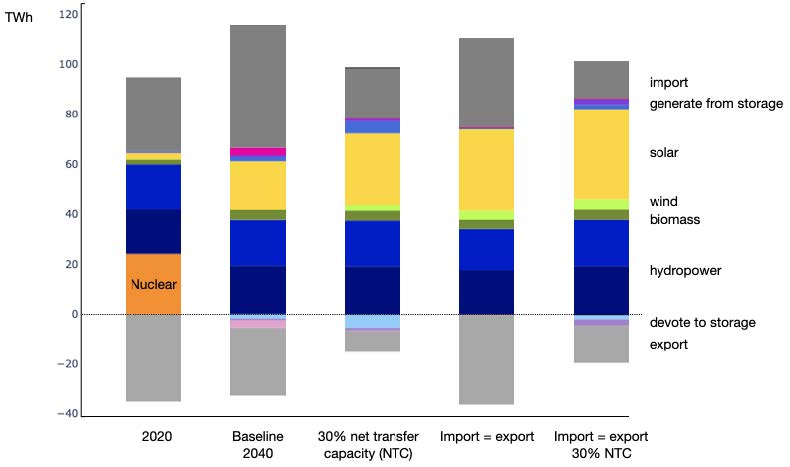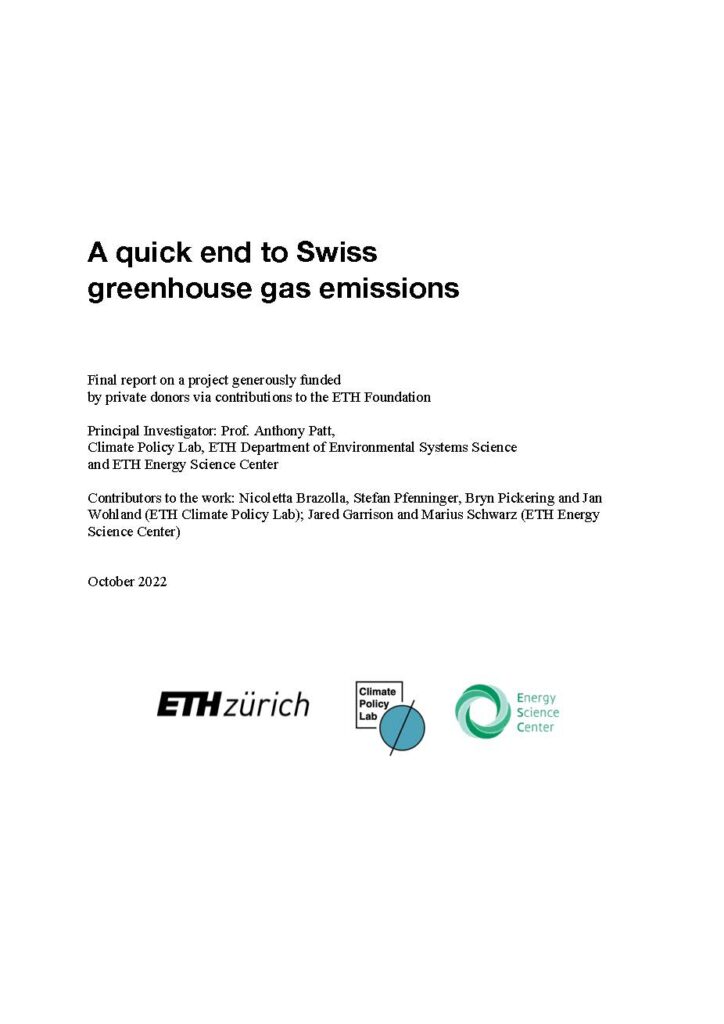Final Project Report: A quick end to Swiss greenhouse gas emissions (PDF, 1,591 KB)
Final Technical Report: Nexus-e, Interconnected Energy Systems Modeling Platform (PDF, 2,970 KB)
All Nexus-e results also available in our interactive webviewer!
Prof. Anthony Patt summarized the project results in an article for the ETH Zukunftsblog.
Background
The recent IPCC 1.5°C report, and the literature on which it is based, highlight the risks of exceeding even 1.5°C global average warming over pre-industrial times. What it would actually require to achieve the 1.5°C target, in terms of pace of decarbonization, is uncertain.
Several political jurisdictions around the world, including the United Kingdom, the Nordic countries, California, and New York, have already set decarbonization targets for 2050 or earlier. But the setting of such targets rests on a formal and credible assessment of the target’s feasibility. There has never been a comprehensive, transparent, and credible analysis of the affordability and feasibility of Switzerland decarbonizing by 2050. The most recent government-sponsored analysis, undertaken to support the Energy Strategy 2050, focused on achieving the target of an 80% emissions reduction. Some of the key technologies that report suggests, such as increased capacity for natural gas power production, are in fact incompatible with the net zero target. Moreover, there has never been an assessment that examines the actual relationship between rapid decarbonization and two other policy goals: maintaining Swiss energy independence, and promoting lifestyle changes to reduce energy demand and greenhouse gas emissions.
Goals
The research project is under the umbrella of the Energy Science Centre (ESC) at ETH Zurich. Prof. Anthony Patt (Climate Policy Group) and Prof. Gabriela Hug (Power Systems Laboratory) would be the co-Principle Investigators.
We analyze the feasibility of the Swiss decarbonization and examines the importance of two factors that appear prominently in Swiss energy and climate policy debates: increasing Swiss energy independence, and adopting major lifestyle changes in order to drastically reduce energy consumption. We expact the results to be similar as shown in the figure below.
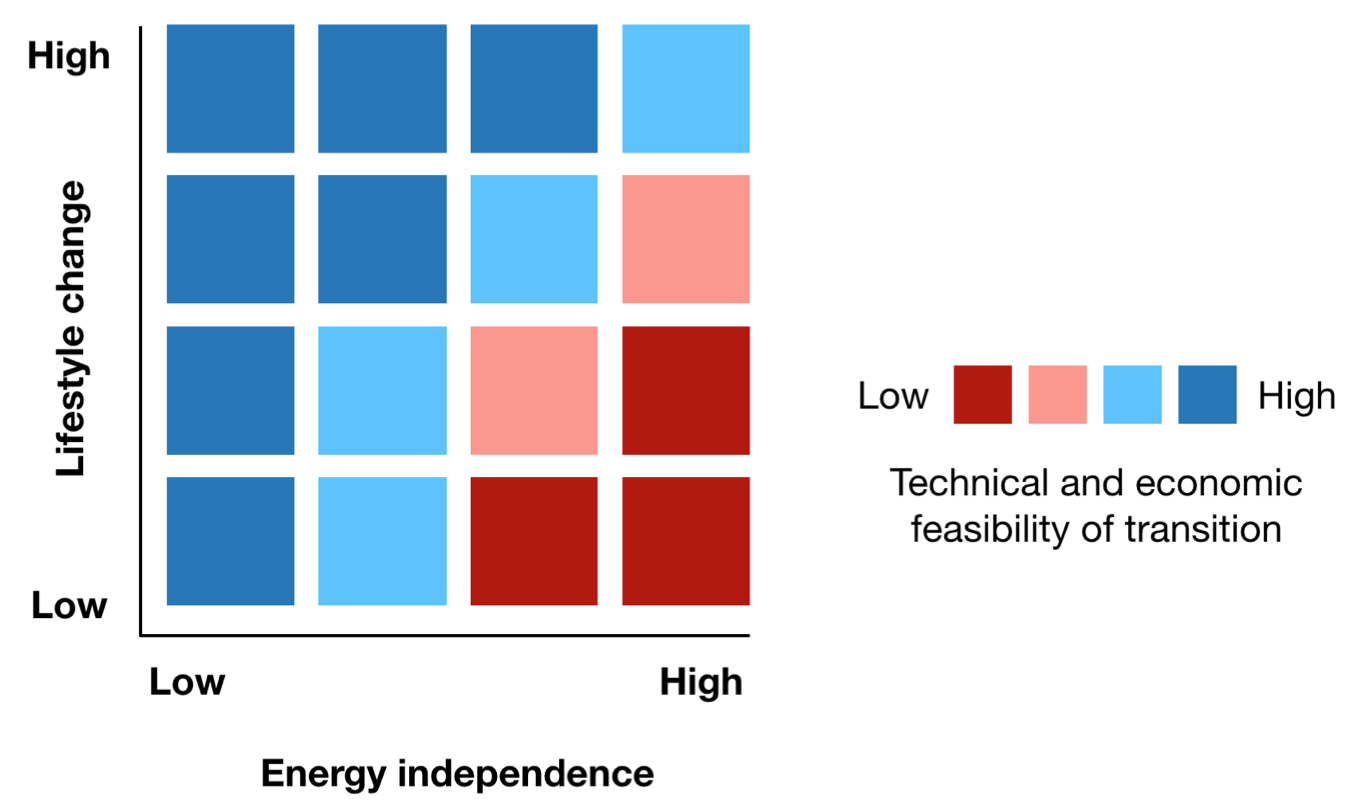
Methods
We conduct the analysis by connecting Nexus-e and Calliope.
- Nexus-e: Swiss power system model, with the GemEl module representing the national economy with detailed interactions between economic sectors and final consumption
- Calliope: European energy system mode, developed in the Climate Policy Group
The Nexus-e platform can use the outputs of Calliope on a Switzerland-European level as boundary conditions. Such interfaces could include electricity demand for Switzerland and other European countries, but also the development of power supply capacities in neighboring countries. With these inputs, Nexus-e can conduct detailed Swiss power system modeling to investigate
- how the Swiss power infrastructure would cope with the emission-free goal,
- how the Swiss power markets needs to be designed,
- what the macroeconomic impacts are.
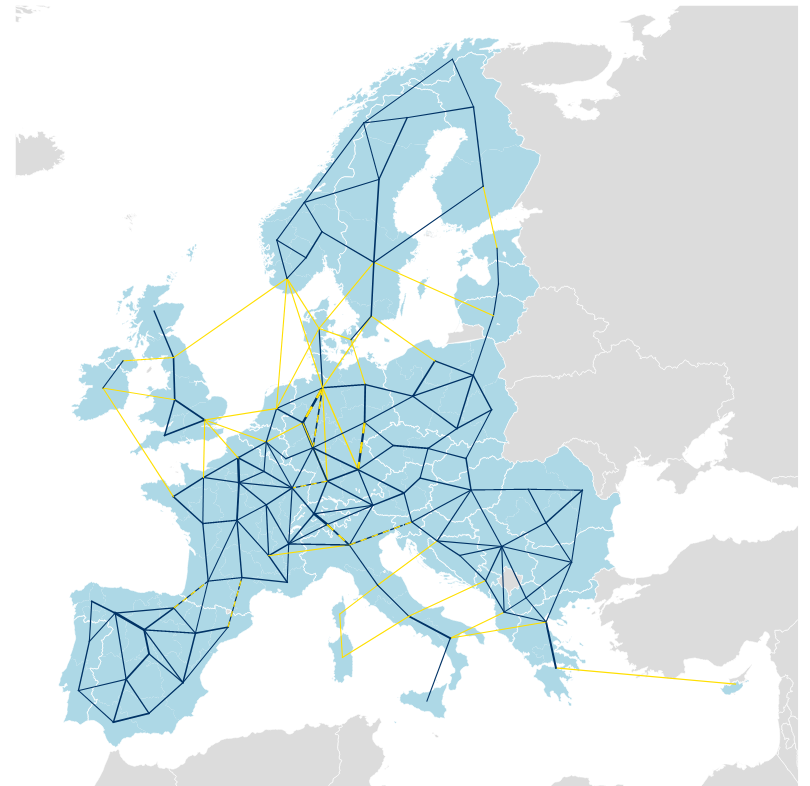
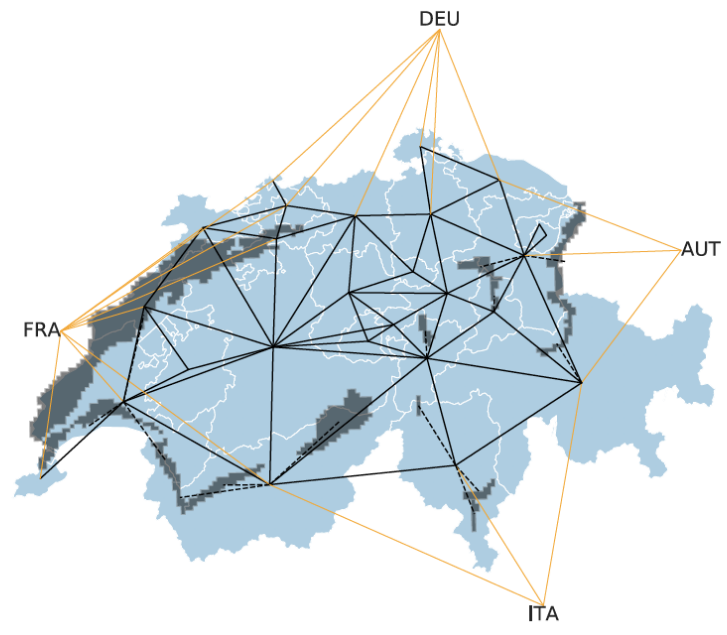
Results
Regarding lifestyle change, our findings suggest that the reduction in two behaviour patterns (i.e., meat consumption, use of non-electric aviation) could make the costs, and political feasibility of achieving climate neutrality substantially lower. This is especially the case with respect to meat consumption, and especially in countries where meat prices are currently relatively low.
Regarding energy independence, our findings suggest that efforts to achieve self-sufficiency on an annual basis with respect to the future dominant energy carrier (electricity) are likely to require policy changes enabling substantially more solar energy development than is currently feasible in Switzerland, especially if the electrification of heating and transport proceeds at an aggressive pace. Reductions foreseen in net transfer capacity – the utilization of transmission lines with neighbouring countries – will not have a major additional effect. A goal of autarchy
with respect to electricity production would require substantial additional policy changes, such as those that would enable the construction of many thousand wind turbines within Switzerland at a pace far quicker than has been possible in the past. Even under the more challenging conditions, however, decarbonization of the energy system is likely to bring overall cost savings relative to today.
